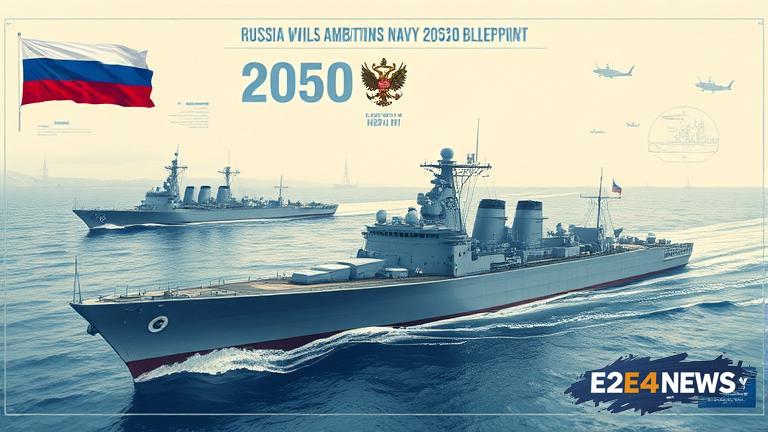On Navy Day, Russian President Vladimir Putin unveiled the country’s ambitious 2050 navy blueprint, which aims to significantly enhance its naval capabilities. The plan outlines a comprehensive approach to developing the Russian Navy, focusing on modernization, technological advancements, and strategic expansion. According to Putin, the new blueprint will enable the Russian Navy to effectively respond to emerging challenges and threats in the maritime domain. The plan prioritizes the development of advanced warships, submarines, and coastal defense systems, as well as the integration of cutting-edge technologies such as artificial intelligence and unmanned systems. The 2050 navy blueprint also emphasizes the importance of strengthening Russia’s maritime infrastructure, including the construction of new ports and shipyards. Furthermore, the plan highlights the need for enhanced international cooperation and diplomacy to promote maritime security and stability. Putin emphasized that the development of the Russian Navy is a key priority for the country’s national security and defense strategy. The 2050 navy blueprint is expected to guide the development of the Russian Navy over the next several decades, with a focus on achieving a strong, modern, and technologically advanced naval force. The plan has been welcomed by Russian military officials and experts, who believe that it will enable the country to effectively compete with other major naval powers. However, some analysts have expressed concerns about the potential costs and challenges associated with implementing the ambitious plan. Despite these concerns, the 2050 navy blueprint is seen as a significant step forward for the Russian Navy, which has been undergoing modernization efforts in recent years. The plan is expected to have far-reaching implications for Russia’s national security, defense strategy, and international relations. In addition to its military significance, the 2050 navy blueprint is also expected to have economic and industrial implications, with potential opportunities for Russian shipbuilders and defense manufacturers. The plan may also lead to increased cooperation between Russia and other countries in the maritime domain, including joint exercises, training programs, and technology sharing. As the Russian Navy continues to evolve and modernize, it is likely to play an increasingly important role in promoting maritime security and stability in the region. The 2050 navy blueprint is a testament to Russia’s commitment to developing a strong and capable naval force, and its implementation is expected to have significant implications for the country’s national security and defense strategy. With its focus on modernization, technological advancements, and strategic expansion, the plan is expected to enable the Russian Navy to effectively respond to emerging challenges and threats in the maritime domain. The development of the Russian Navy is a key priority for the country’s national security and defense strategy, and the 2050 navy blueprint is seen as a significant step forward in achieving this goal. Overall, the 2050 navy blueprint is an ambitious and comprehensive plan that outlines a clear vision for the development of the Russian Navy over the next several decades. The plan has the potential to significantly enhance Russia’s naval capabilities, promote maritime security and stability, and contribute to the country’s national security and defense strategy.
